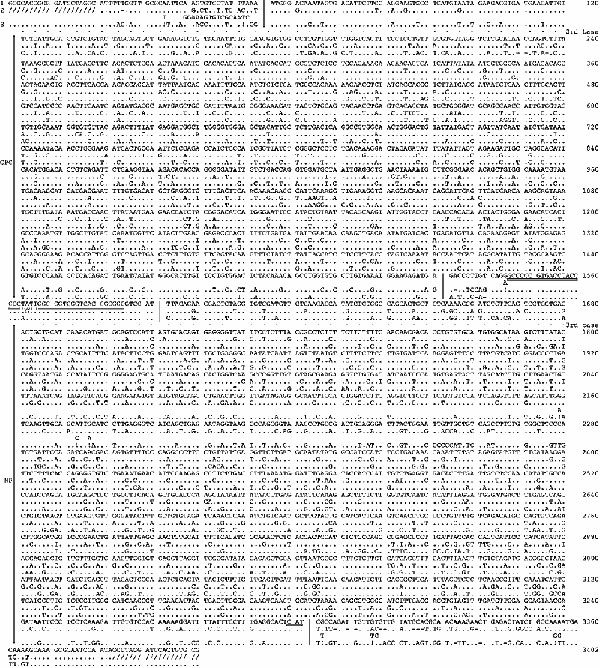Volume 6, Number 5—October 2000
Research
Imported Lassa Fever in Germany: Molecular Characterization of a New Lassa Virus Strain
Figure 4

Figure 4. Alignment of the genomic S RNA sequences of Lassa Josiah, AV, and Nigeria (sequences 1, 2, and 3, respectively). The 3'- and 5'-noncoding regions and the intergenic region are separated from the coding regions by vertical bars. Long vertical lines on the left mark the GPC and NP coding regions. Third base positions are marked by a line of dots above each coding region. The GPC and NP start codons are underlined. The stem of the stem-loop structure is underlined by a double line, while the loop is underlined by a dotted line. The RT primer binding sites are indicated by slashes. Inserted nucleotides are shown above the sequence with the position of insertion indicated by a vertical line. The S RNA sequence of strain AV was sent to GenBank and was assigned the accession number AF246121.